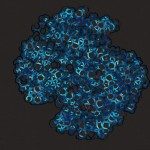Présentation
Type IV pili and pseudopili: structure, dynamics, assembly and molecular function
Type IV pili and pseudopili assembled by type 2 secretion systems (T2SS) are thin dynamic fibers that perform diverse functions, from adherence, motility, agregation and signaling to DNA uptake and protein secretion. The main determinants of these functions reside in the dynamics, surface and physical properties of the fiber subunits – pilins and pseudopilins. Initially embedded in the plasma membrane, pilins are assembled into helical arrays thanks to a large membrane protein complex powered by a cytoplasmic ATPase. To understand their assembly and function, we are focusing on the comparative analysis of two models: type IV pili from Escherichia coli and pseudopili from the Klebsiella oxytoca T2SS. Our goal is to determine the detailed structure of these fibers and the molecular mechanism of fiber assembly. In addition, we seek to identify functional determinants of fiber stability and surface properties. To gain this knowledge we use integrative approaches combining the data obtained from the high- resolution structural analysis by NMR, electron microscopy, molecular modeling and functional and biochemical analysis of these systems.






